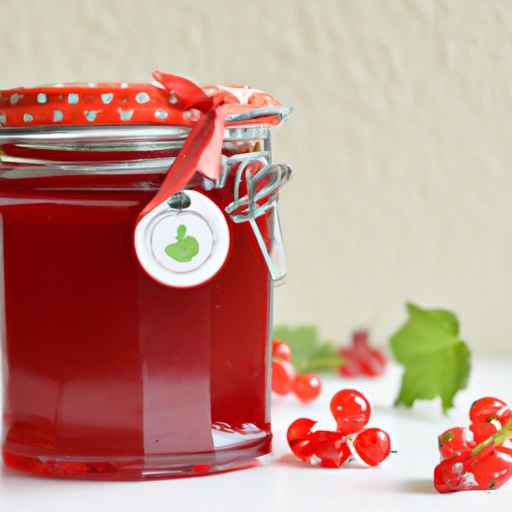Red Currant Jelly
Description

Red currant jelly is a sweet and tart condiment made from red currants, sugar, and sometimes pectin. The jelly is known for its vibrant red hue, glossy texture, and perfect balance of sweetness and acidity. It is a staple in European cuisines and has gained popularity across the globe for its ability to complement both sweet and savory dishes. The measurements for red currant jelly in recipes may be given in ounces (oz) or grams (g), tablespoons (tbsp) or milliliters (ml), making it accessible to cooks using both American and European units.
Common uses
Red currant jelly is commonly used as a glaze for meats, a base for fruit tarts, and a spread for toast. It also serves as a key ingredient in sauces and dressings, adding a burst of flavor and a touch of elegance to many recipes. The jelly's versatility makes it a valuable addition to any kitchen repertoire, whether used in simple family meals or gourmet creations.
Nutritional value
Calories
Typically, a tablespoon (about 20 grams) of red currant jelly contains around 56 calories.
Protein
Red currant jelly has a negligible amount of protein, less than 0.1 grams per tablespoon.
Fat
There is virtually no fat in red currant jelly, making it a low-fat ingredient for recipes.
Carbohydrates
Most of the calories in red currant jelly come from carbohydrates, with about 14 grams per tablespoon, mainly from sugars.
Vitamins
While the cooking process can reduce vitamin content, red currants are naturally high in vitamin C, and the jelly may retain some of its benefits.
Minerals
Red currants also contain potassium and small amounts of other minerals, which may be present in the jelly in trace amounts.
Health benefits
Red currant jelly, while high in sugar, can offer some health benefits due to the presence of vitamin C and antioxidants from the berries, which are known for their immune-boosting properties. However, it should be consumed in moderation as part of a balanced diet.
Potential risks
Due to its high sugar content, excessive consumption of red currant jelly may contribute to weight gain, dental issues, and could affect blood sugar levels, making it unsuitable for people with diabetes or those on low-sugar diets.
Common recipes
Red currant jelly is a key ingredient in classic recipes like Cumberland sauce, red currant glazes for lamb, and in various pastry fillings. It also jazzes up cocktail sauces and vinaigrettes.
Cooking methods
While typically used as a ready-to-serve condiment, red currant jelly can be gently heated to soften or melt before being brushed onto meats or incorporated into sauces.
Pairing with other ingredients
The jelly pairs exceptionally well with game meats, poultry, and pork. Its tartness also complements creamy cheeses and is delightful as a topping on desserts or blended into yogurt.
Summary
Red currant jelly is a delightful blend of sweet and tart, ideal for enhancing both sweet and savory dishes. Its glossy texture and vibrant color add visual appeal and a burst of flavor to a variety of recipes. With its rich history and culinary versatility, red currant jelly remains a treasured ingredient in kitchens worldwide.